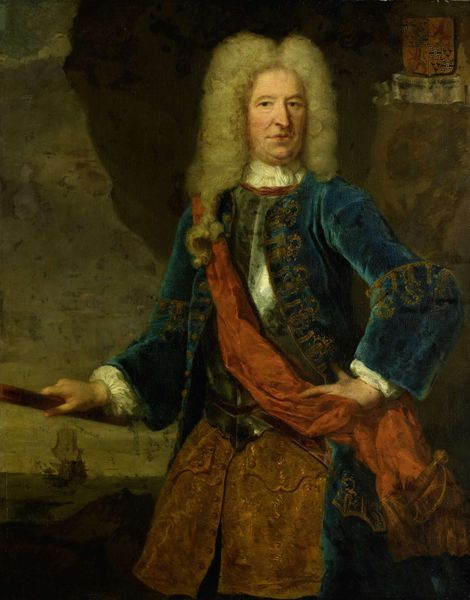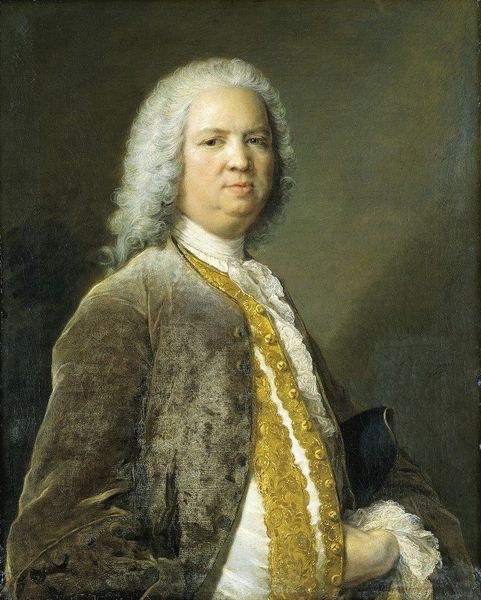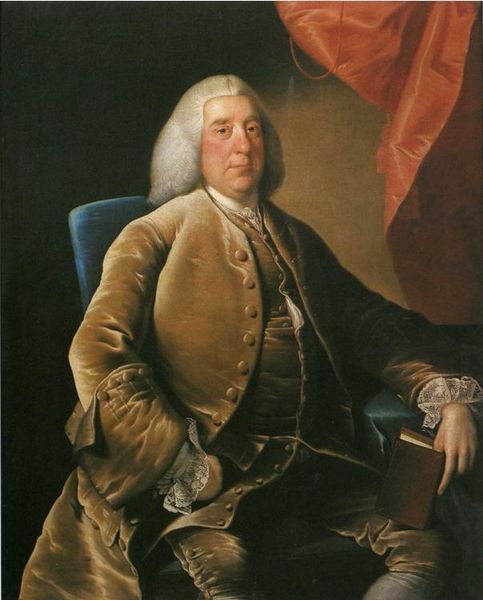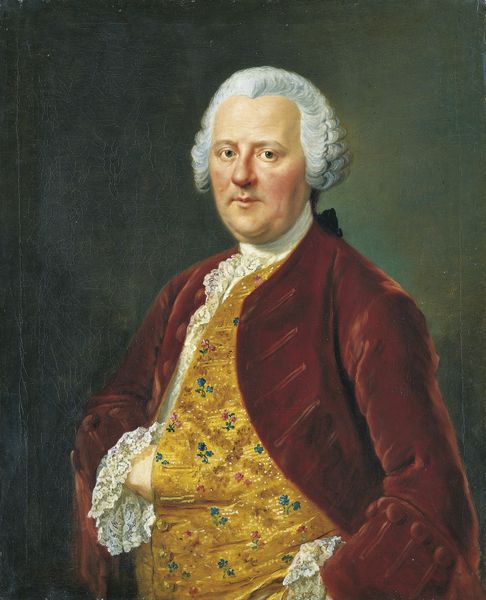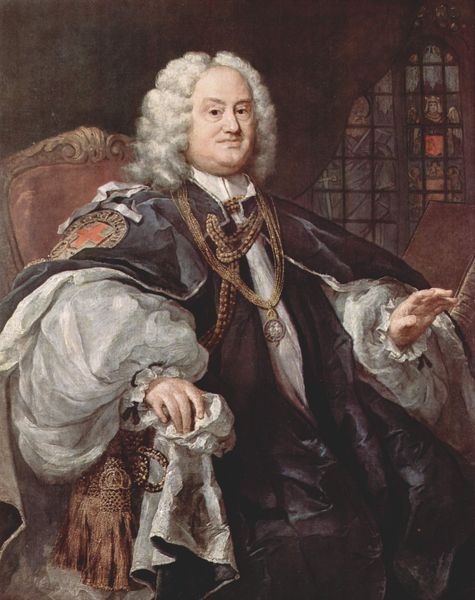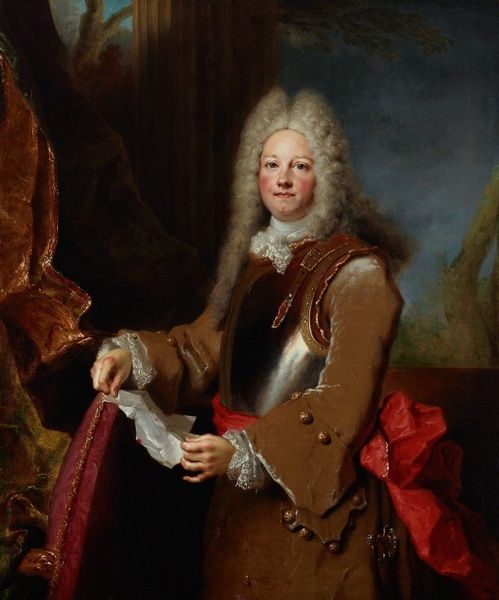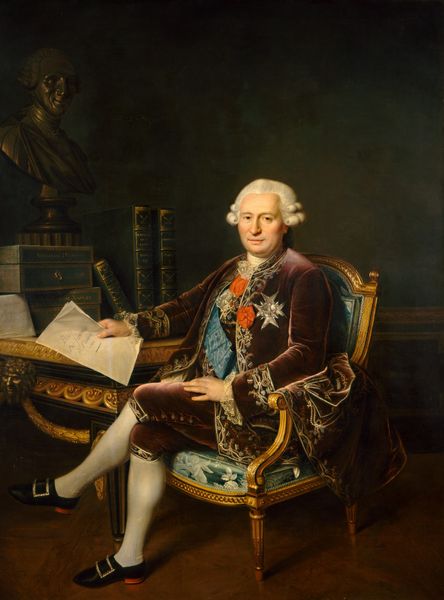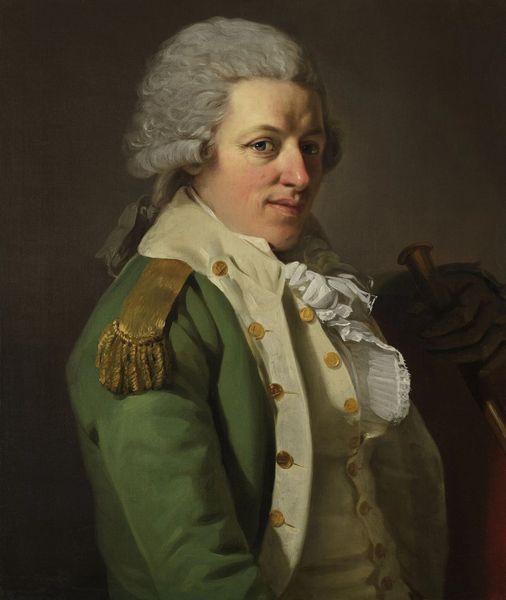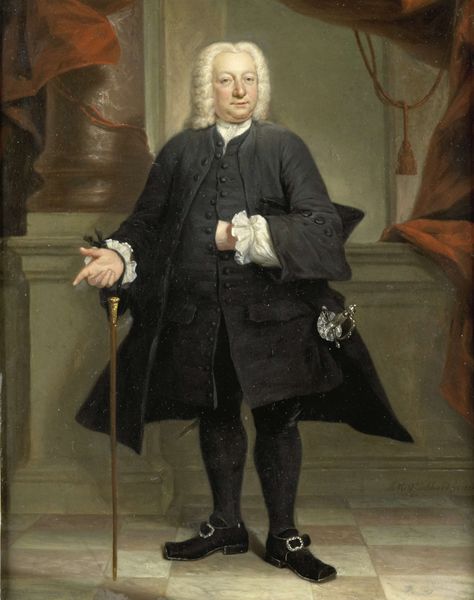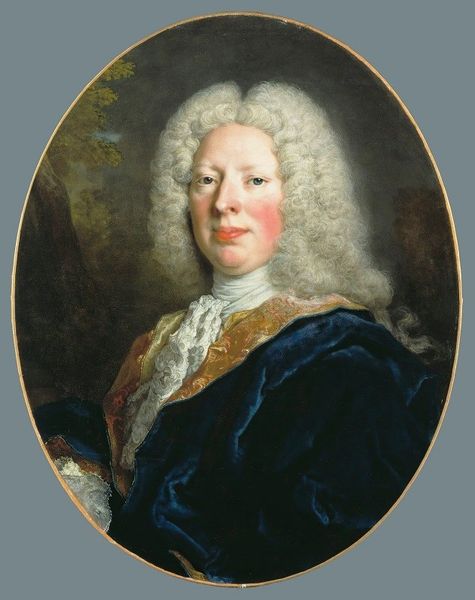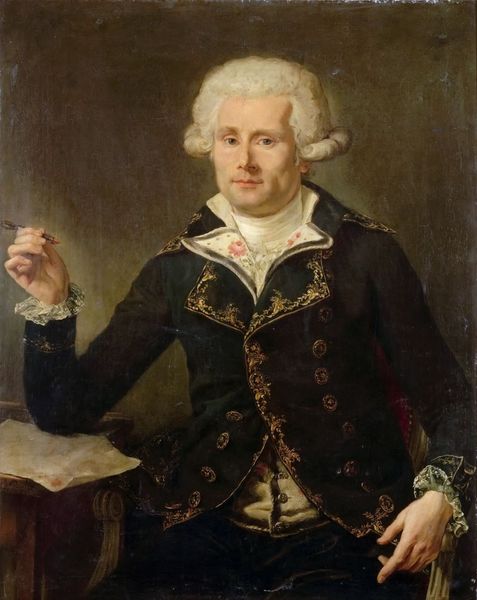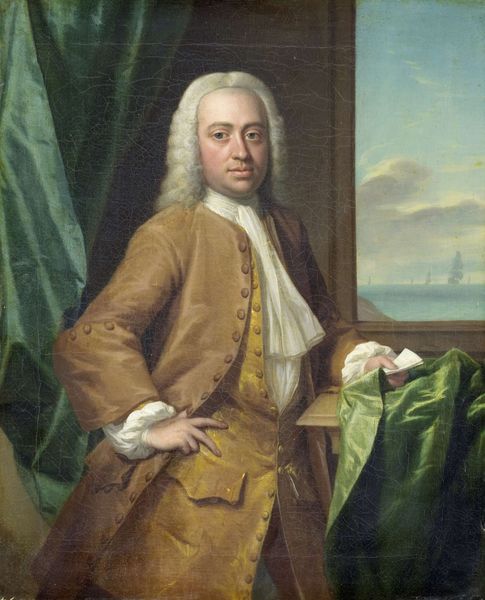
Dimensions: support: 1243 x 1016 mm
Copyright: CC-BY-NC-ND 4.0 DEED, Photo: Tate
Curator: This is Thomas Frye's portrait of Henry Crispe of the Custom House, held here at Tate Britain. Editor: The chiaroscuro is quite striking; it imbues the subject with an air of gravitas, almost theatrical. Curator: Indeed. Frye employs the conventions of formal portraiture to represent Crispe, likely to project authority. Note the accoutrements of his office – the inkwell, quill, and documents. Editor: The textural contrast is also notable—the velvet coat against the smoothness of his complexion, the sheen of the silk. It draws the eye and establishes a hierarchy of materials within the composition. Curator: Portraits like these served to solidify social standing. Crispe's position in the Custom House was undoubtedly one of considerable power and influence. The portrait acts as a visual marker of his place in society. Editor: Examining the brushwork, one finds a remarkable control over light and shadow, a testament to the artist's technical skill. Curator: Absolutely, and viewing it through that lens, we gain an enriched comprehension of both the man and the era.
Comments
tatebritain 8 months ago
⋮
http://www.tate.org.uk/art/artworks/frye-henry-crispe-of-the-custom-house-t05784
Join the conversation
Join millions of artists and users on Artera today and experience the ultimate creative platform.
tatebritain 8 months ago
⋮
Henry Crispe worked at the Custom House, London, where goods arriving by ship were checked and duties collected. At this time, the Port of London was undergoing rapid growth, becoming the largest in the world. A huge number of ships transported goods from colonised countries to Britain. By the end of the century, a separate West India Dock was built on the edge of London to deal with ships returning from the Caribbean. Frye had aspirations as a poet as well as working in business, represented by the quill and the writing materials on the table. Gallery label, September 2024
